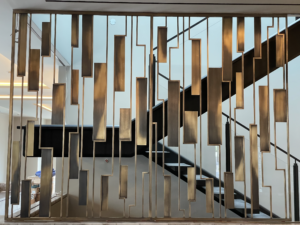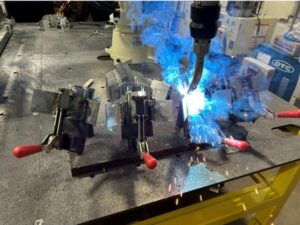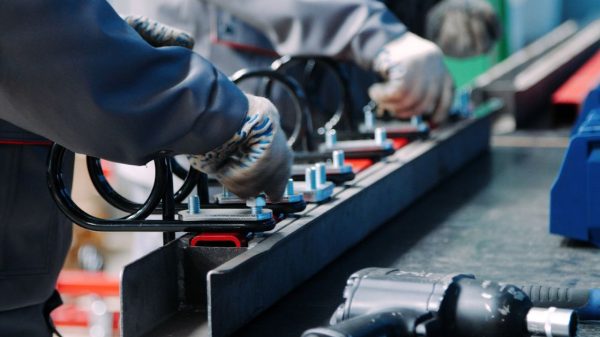Common Similarities and Differences Between Metal Fabrication and Welding
Working with metals always brings forth the two major processes in our mind – metal fabrication and welding. While these terms are often used interchangeably, they are distinct procedures with unique roles in manufacturing, various industrial applications and construction. However, they also share some similarities that contribute to their widespread use in designing metal components and structures. In this blog, we will understand the nuances that can help you select the right procedure for your particular needs.

What is metal fabrication?
Metal fabrication is a broad term that includes multiple procedures such as shaping, cutting, and assembling metal to design parts, structures, or finished parts. The term fabrication is attached with this process as it features customization. Fabricators fulfil the unique requirements of their clients with the process of custom metal fabrication. It is a comprehensive field that begins with raw materials and finishes with a completely formed product. Metal fabrication usually includes techniques as follows:
- Cutting: Utilizing tools for example lasers, plasma cutters and water jets to achieve particular shapes and dimensions.
- Bending: Utilizing press brakes or rollers to shape the metal sheets into desired forms.
- Forming: Molding or reshaping metal to meet the specifications of projects.
- Assembly: Putting together different components through riveting, welding or other methods.
Fabrication is important in industries including automotive, aerospace, construction and heavy equipment manufacturing, as it produces the required parts and components for different applications.
What is welding?
On the other hand, welding is a particular procedure within metal fabrication. It includes joining two or more metal pieces through applying heat, pressure or both to create a permanent bond. Unlike metal fabrication, that includes multiple techniques, welding focuses particularly on fusing materials. Some of the most common welding methods are:
- MIG welding (Metal inert Gas): Familiar for its speed and versatility, this method is perfect for large-scale production.
- TIG welding (Tungsten inert Gas): Appropriate for precision work, specially with metals or exotic materials including titanium and aluminum.
- Arc welding: the traditional and widely utilized welding procedure that offer strong and durable bonds.
- Spot welding: Frequently utilized manufacturing, especially for joining thin sheet of metal.
Welding plays an important role in industries like shipbuilding, automotive manufacturing, construction and custom metalworking.
Key similarities between metal fabrication and welding
- Work with metals
Both metal fabrication and welding are primarily concerned with metals and as their core material. They are fundamental procedures in industries that need custom metal fabrication, such as construction, engineering, and manufacturing.
- Tools and techniques
Metal welding and fabrication rely on specialized tools and techniques to shape, modify and join metal. For example, cutting tools like plasma cutters or lasers are often used in both processes to prepare for assembly or welding.
- Skilled workforce
Both the procedures require skilled professionals who understand the properties of different metals, safety protocols and the operation of advanced machinery. Expertise is critical in assuring high-quality outcomes.
- Industrial applications
Whether you are constructing skyscrapers, manufacturing parts for an automobile or building a bridge, both metal fabrication and welding are integral for achieving a durable and functional outcome.
- Customization
Both fabrication and welding offer ability to create custom solutions tailored to particular project needs. This versatility makes them indispensable in industries that need bespoke designs or components.
Major differences between metal fabrication and welding
- Scope of work
The primary difference lies in their scope. Metal fabrication is a considerably broad field that includes multiple procedures like bending, cutting, forming and assembling metal parts. Welding on the other hand, is a procedure that includes joining materials to create a single piece.

- Stages of production
Metal fabrication usually takes place at the beginning or middle stages of production, where raw materials are given shapes into usable components. Conversely, welding is usually a finished procedure used to assemble pre-fabricated parts within the final product.
- Techniques and methods
Fabrication includes different techniques such as cutting, machining and bending. Welding, however, includesa smaller set of specialized methods, each curated for different types of joints and materials.
- Equipment used
While there is some overlap in tools, fabrication usually includes equipment like press brakes, CNC machines and laser cutters. Welding need tools like torches, electrodes to create bonds and welding guns.
- Output and purpose
Metal fabrication is a focused process to create parts or structures from raw materials. In contrast, welding is particularly concerned with joining these parts into cohesive structures and units.
How metal fabrications and welding complement each other
Through the above discussion, it is clear that they are distinct procedures. Metal fabrication and welding often work hand-in-hand. For example, metal fabricators can create individual components or structure, which are then welded together during assembly. This synergy is particularly prominent in industries like manufacturing and construction where both procedures are important for completing complex projects.
Fabrication sets the stage through preparing particular parts, while welding assures these parts come together securely and seamlessly. This collaboration results in products which are both durable and functional, meeting the continuous demands of modern industry.
FAQs
- What industries rely heavily on metal fabrication and welding?
Both metal fabrication and welding are essential to producing robust and useful goods in sectors like construction, automotive, aerospace, shipbuilding, and heavy equipment manufacturing.
- Is welding a part of metal fabrication?
Indeed, a lot of people think about welding as a subset of metal fabrication. It is one of the numerous procedures used to assemble or connect metal parts made during fabrication.
- Can welding be performed without prior fabrication?
Usually not. Usually, prefabricated metal parts or raw materials that have been formed and prepared before joining are needed for welding.
- How do I choose between metal fabrication and welding for my project?
The decision is based on where your project is at. Metal fabrication is the best option for custom metal parts or components. Welding is the method you utilize if you need to put together or combine prefabricated parts.


